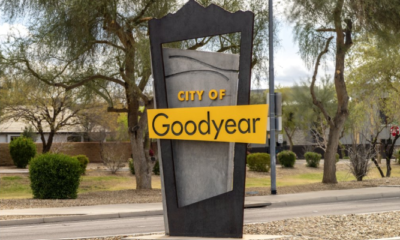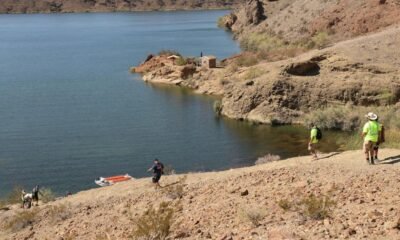Fashion
Southern Arizona’s Border Detentions Soar to $2 Billion Over a Decade

Taxpayer expenses related to the detention of illegal immigrants have come under scrutiny, as recent cases highlight the financial burden on the justice system. Ivan Moreno Miranda was apprehended on January 14 for crossing the border illegally near Douglas after a previous deportation in 2013. He was placed in U.S. Marshals custody, accruing a daily detention cost of approximately $80.
After four months in custody, he was sentenced to time served last Thursday, totaling around $9,600 in taxpayer costs. A similar yet more prolonged case involved David Borrayo Fajardo, who was caught near Ajo in October after being deported a month earlier. With a past of significant criminal convictions, his case extended beyond Moreno Miranda’s. Borrayo Fajardo incurred a detention cost of roughly $16,800 during his seven-month custody period.
The financial implications are staggering. A decade of housing individuals on immigration-related charges in Southern Arizona has cost taxpayers over $1.8 billion, with the U.S. Marshals spending approximately $1.1 billion in fiscal years 2007-2015. Notably, about 90 percent of these funds were allocated to the Central Arizona Detention Center operated by CoreCivic.
Additionally, U.S. Immigration and Customs Enforcement (ICE) has spent $760 million for detaining individuals from 2007 to 2016. The Federal Bureau of Prisons currently houses 2,825 immigration offenders in Arizona, with an annual cost of $98 million. The trend points to an ongoing and escalating financial burden on taxpayers, with the combined cost of detaining illegal immigrants in Southern Arizona exceeding $2 billion in the past decade, excluding expenses incurred at Border Patrol holding facilities.
Furthermore, ICE’s detention expenditures quadrupled during fiscal years 2007-2016, signaling a dramatic rise in costs. The anticipated increase in detainee numbers comes as federal authorities implement directives aimed at stricter immigration policies. Plans encouraged by Department of Homeland Security Secretary John Kelly aim to relocate resources and expand detention capacities near the U.S.-Mexico border.
The legal landscape is changing, too. U.S. Attorney General Jeff Sessions has instructed federal prosecutors to prioritize immigration-related crimes, including illegal re-entry. These instructions may lead to an uptick in felony prosecutions, as noted by defense attorney F. Michael Carrillo, who emphasized the moral implications of this crackdown.
As for operational transparency, both ICE and the Border Patrol have been reticent, denying requests for facility tours and data disclosures. In the absence of official figures, the Arizona Daily Star has relied on interviews and documents to piece together the workings of the immigration detention system in Southern Arizona.
The routes through the detention system primarily bifurcate into criminal and administrative pathways. In criminal cases, an immigrant charged with illegal re-entry is detained by the Marshals Service during prosecution. Approximately one-third of those apprehended by the Border Patrol in the Tucson Sector face criminal charges, while many others are processed through expedited programs that resolve cases quickly.
Upon sentencing, detainees may transition to federal prison or continue to face administrative proceedings for deportation under ICE. Those arrested can remain in custody for varying lengths of time, influenced by their legal and administrative choices.
Financial scrutiny of the system reveals significant expenditures. For example, ICE’s funding allocations in Southern Arizona have detailed significant investments across various facilities, most notably at CoreCivic’s establishments. The daily costs reflect an increase, indicating adjustments as detainee populations fluctuate.
Despite issues surrounding detention conditions and mortality rates at facilities like the Eloy Detention Center, demands continue to be placed on private operators, with local marshals emphasizing the necessity of these facilities to maintain operational capacity.
In summary, the combination of rising costs, shifting legal frameworks, and evolving operational demands presents ongoing challenges within the immigration detention system in Southern Arizona.

















